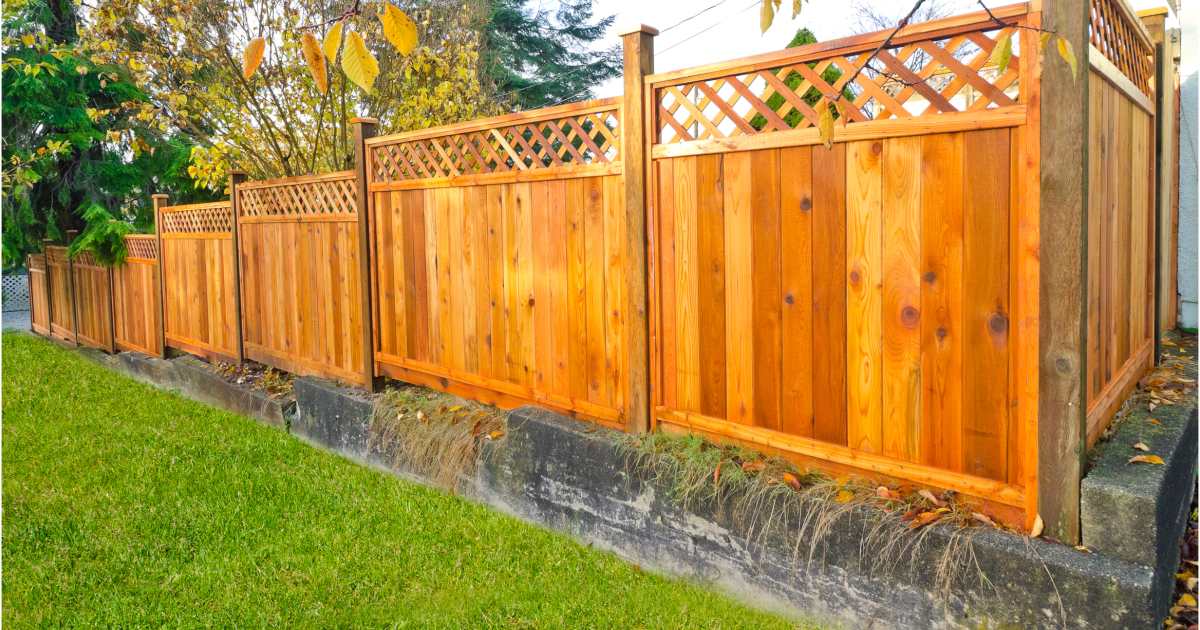All Categories
Featured

When planning a fence project, several home owners focus mainly on the product and setup expenses. However, there are a number of concealed expenditures that can accumulate rapidly and impact your general spending plan. Understanding these potential costs beforehand can assist you better plan and avoid unexpected monetary surprises. Here's a malfunction of surprise expenses you ought to think about when budgeting for a fencing.
- Permits and Regulations. Before mounting a brand-new fencing, it is necessary to consult your city government to see if licenses are needed. Some cities or counties have stringent policies pertaining to fence product, elevation, and location, and you may need an authorization for your job. Furthermore, if you live in an area with a Home owners' Association (HOA), they could have their very own collection of rules and requirements for secure fencing.
Expense array: $50--$ 500 for permits, depending upon your area and task range. 2. Land Cleaning and Preparation. If the area where you desire to install your fencing is overgrown with vegetation, rocks, or other barriers, it may require clearing prior to the fencing can be installed. This can be a time-consuming process, especially if you have a big area to cover. If your land is unequal or has an incline, you may need to spend in grading or progressing to make sure the fence is mounted properly.

Price array: $200--$ 2,000 depending on the dimension and intricacy of the land prep work. 3. Removal of Existing Fencing. If you're changing an old fencing, the expense of removal and disposal may be greater than expected. Several professionals charge extra to eliminate old secure fencing, and disposal costs can add to the total expense, especially if the materials are tough to reuse or get rid of of.
Expense variety: $3--$ 10 per direct foot for fencing removal and disposal. 4. Utility Line Marking and Adjustments. Prior to excavating for posts, it is very important to guarantee that there are no below ground utilities in the location, such as gas, water, or electric lines. Utility firms typically supply a free solution to note these lines, however sometimes, professionals may bill for situating and readjusting these energies to avoid damage throughout installment.
Cost array: $100--$ 500 for energy line modifications or re-routing. 5. Custom-made Qualities and Additions. If you choose to add custom functions to your fencing, such as gates, decorative elements, or automated systems, these can substantially enhance the general price. Gates, especially automatic ones, call for additional products and labor, while ornamental components or customized styles contribute to the intricacy and expense.
Cost array: $100--$ 2,000 or more, depending on the attributes you pick. 6. Material Shipment Costs. While several service providers include material costs in their estimate, some charge a different charge for delivering the fence materials to your residential property. Shipment costs can differ relying on the distance from the supplier to your location and the size of your order.
Price variety: $50--$ 200 relying on the range and dimension of the order. 7. Post Setup Obstacles. The problem of the dirt can have a large influence on the simplicity and expense of installation. Rocky, clay, or largely stuffed soil can make digging blog post holes lengthy and challenging. These extra expenses can add up. if your fence installation calls for specific devices to deal with tough dirt.
Price range: $100--$ 500 or more depending on the soil type and difficulty. 8. Long-Term Upkeep Expenses. Some fence products require continuous upkeep to guarantee they last. Wooden fencings may require to be discolored or secured every few years to protect against rot, while plastic and metal fences are usually low-maintenance but might incur repair services for damage over time. It is necessary to factor these future costs right into your total budget.

Expense range: $50--$ 300 annually for upkeep, depending upon product kind. 9. Weather Delays. Uncertain climate condition, such as hefty rain, snow, or severe warm, can delay the installment procedure. These hold-ups can cause added labor fees or longer-than-expected task timelines, adding to the complete price of the fencing.
Cost variety: Variable relying on climate condition and task duration. 10. Residential Property Line Disputes. Setting up a fence near a home line can cause disputes with neighbors, specifically if the boundary is unclear. In such situations, you might need to hire an expert land surveyor to develop the precise home line, which includes added expenses to your job.
Expense array: $400--$ 1,000 for an expert residential or commercial property survey. Conclusion. When budgeting for your fence, it's necessary to make up both expected and hidden costs to avoid any type of surprises. Licenses, land preparation, removal of an old fence, energy adjustments, custom attributes, and lasting upkeep are simply a few factors that can influence the last cost. By preparing in advance and going over all potential expenses with your contractor, you can ensure that your fencing task stays within budget and satisfies your assumptions.
Latest Posts
Join WyHy FCU – Top Benefits for Your Future
Published May 26, 25
1 min read
How Chicago Drivers Pick Montclare Auto Repair for Trusted Service and Great Savings
Published May 22, 25
1 min read
Discover Special Auto Repair Specials in Chicago at Montclare Auto Repair
Published May 21, 25
1 min read
More
Latest Posts
Join WyHy FCU – Top Benefits for Your Future
Published May 26, 25
1 min read
How Chicago Drivers Pick Montclare Auto Repair for Trusted Service and Great Savings
Published May 22, 25
1 min read
Discover Special Auto Repair Specials in Chicago at Montclare Auto Repair
Published May 21, 25
1 min read